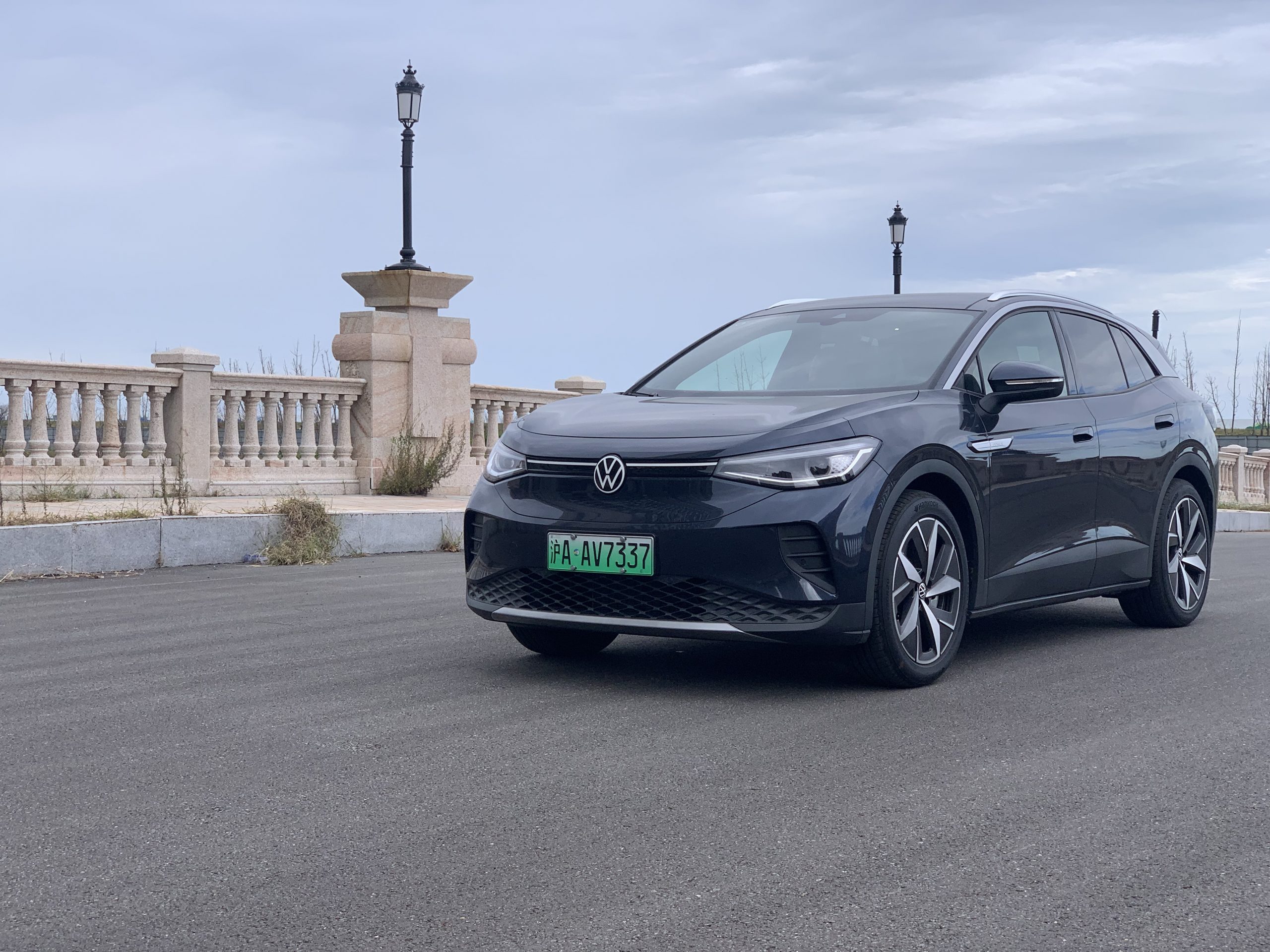Hello everyone, I am the owner of the FAW-Volkswagen ID.4 CROZZ and you can call me Ni Xiaofeng.
In mid-July this year, I finally picked up my ID.4 CROZZ that had been sealed in the 4S store for three months. As a pure electric vehicle, it completely changed my lifestyle.
Before that, my car was a ninth-generation Accord manufactured in 2015. I had chosen the 2.4L luxury version at that time. However, with the soaring oil prices, the 65-liter tank cost me nearly 500 yuan every time I refueled. Although the fuel consumption at 5.5L/100km during high-speed cruising, it often soared to 12-14L/100km in the congested city area. In Shanghai, including parking fees, the cost of travel was even more expensive than taking a taxi. Therefore, the idea to change my car arose.
Considering the current high oil prices and the daily travel needs of tens of kilometers, a cost-effective and new energy license plate equipped electric vehicle became my preferred choice.
Part 1: Choosing a car
At the beginning, I didn’t have much trust in electric vehicles and always felt that they were similar to cell phones, which updated and upgraded quickly. Therefore, my budget was only 100,000 yuan. But after searching around, there were limited options for electric vehicles at this price range. Apart from the newly released BYD Dolphin, there was really not much to choose from.
Just when I was pondering about the Dolphin not offering any discounts, and that there would be a 3,000 yuan inspection fee and 1,000 yuan warehouse fee to take the car out, suddenly it increased in price twice. My desire to buy it instantly dropped to freezing point.
After the Spring Festival, I changed my way of thinking and believed that electric vehicles could also be used for many years. Therefore, I decided to buy one that was slightly better with a budget of 200,000 yuan. But this price was also embarrassing because the Model 3 was definitely beyond my reach, and both BYD and XPeng were tempting me to upgrade my budget to 250,000 yuan through their configuration lists. When I felt hopeless, I walked into the FAW-Volkswagen 4S store.
Before that, my mindset was fixed; I always associated electric vehicles with new car-making forces. But I didn’t expect such a high-quality pure electric car like the Volkswagen ID.4. Importantly, it can meet my needs to the greatest extent within a budget of around 200,000 yuan:
- Endorsed by Volkswagen brand;
- NEDC working conditions with a range of 550 km.3. Equipped with Ningde Times 811 ternary lithium 84.5 kWh battery pack;
- Heavy chassis tuning;
- Spacious interior space;
- No fancy screens or functions;
…
I chose the 2021 Long-Range PURE+ two-wheel drive version, which is the lowest configuration equipped with the 84.5 kWh large battery pack, with an official guide price of 219,900 yuan. When I talked to the salesperson, they offered me a cash discount of 20,000 yuan, a 5,000 yuan insurance subsidy, and two electric cards worth 2,600 yuan and 9,000 yuan, which added up to a very low price. Plus, the 2022 model is going to increase by 10,000 yuan, so I didn’t think too much and just swiped my card.
Part 2: Driving Experience
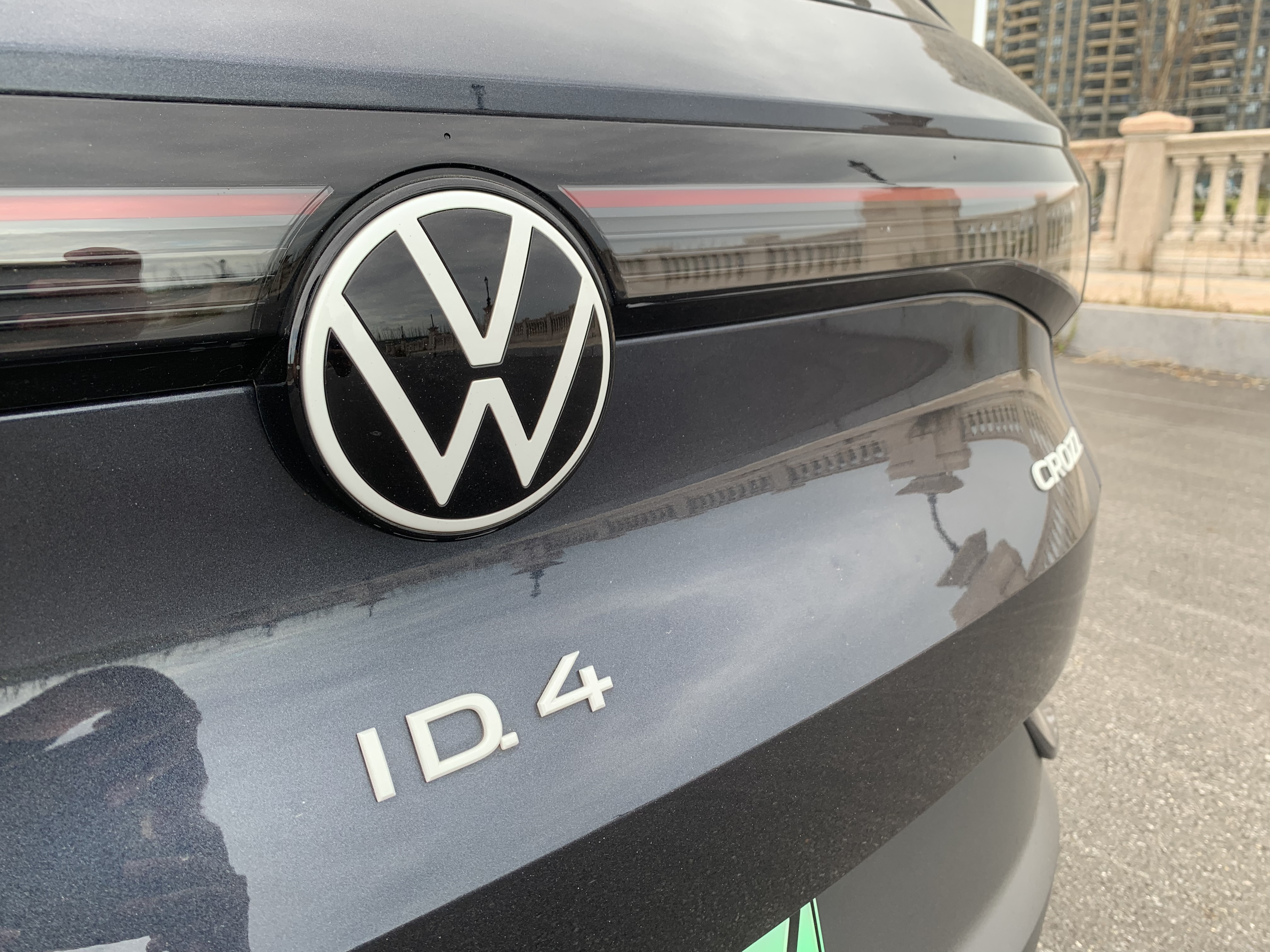
I have test driven the Tesla Model 3 and Y, as well as the Zero Run C11 and XPeng P7. I always feel that current electric cars are like toy boxes without the mechanical interaction and communication between people and cars that traditional fuel cars have. But the ID.4 CROZZ has achieved this.
If you blindfolded me and let me sit in this car for the first time, I would think it is a product from the Volkswagen MLB platform. The acceleration is quick, and the chassis is heavy, making me feel like I’m driving an expensive luxury car.
In fact, it is based on the MEB platform, and the driving experience is also something that other electric cars cannot provide. For the simplest example, my family members get motion sickness when they sit in a Tesla or a NIO, but not in the ID.4 CROZZ. Where do you think the problem lies?

The ID.4 CROZZ, equipped with a rear-wheel drive motor with 150 kW and 310 N·m of torque, does not have high parameters compared to many 2.0T engines. But in reality, its initial acceleration within 60 km/h is very rapid, and the mid-range acceleration of 80-100 km/h is also very powerful. When the speed is higher than 120 km/h, its acceleration becomes relatively strained. But do you really need to drive that fast?
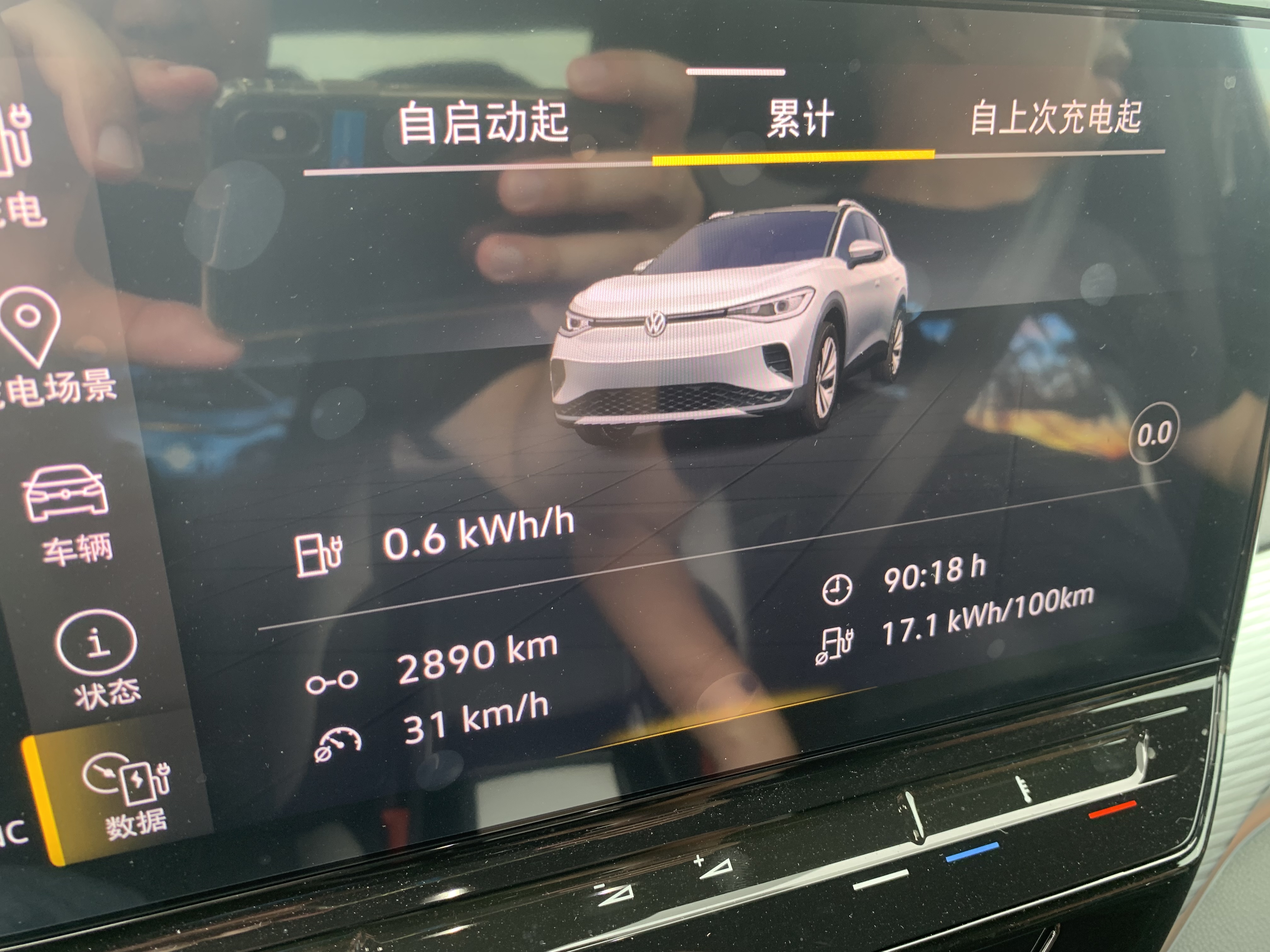 For electric vehicles, many people are concerned with the energy consumption and range of the vehicle. Since taking delivery, I have driven 2,890 kilometers, of which approximately 1,200 kilometers were on highways, resulting in an average speed of 31 km/h. At this time, the energy consumption is 17.1 kWh/100 km. It should be noted that during the previous hot summer, I had the air conditioning on for almost all of these nearly 3,000 kilometers. Therefore, if air conditioning is not used, the energy consumption can be reduced by 2-3 kWh/100 km.
For electric vehicles, many people are concerned with the energy consumption and range of the vehicle. Since taking delivery, I have driven 2,890 kilometers, of which approximately 1,200 kilometers were on highways, resulting in an average speed of 31 km/h. At this time, the energy consumption is 17.1 kWh/100 km. It should be noted that during the previous hot summer, I had the air conditioning on for almost all of these nearly 3,000 kilometers. Therefore, if air conditioning is not used, the energy consumption can be reduced by 2-3 kWh/100 km.
As for the range, although the official NEDC (New European Driving Cycle) shows 550 kilometers, this cannot be achieved in actual situations. I generally start charging at 30% and stop charging at 80%. During this period, consuming 50% of the energy can basically drive 250 kilometers. Therefore, if driving 500 kilometers from 100% to 0%, it should be no problem, provided that the temperature is above 20 degrees Celsius. As for how much range will be lost in low temperatures, I will report back after this winter.
I also want to recommend the original charging box for the ID.4 CROZZ. Although the power is only 220V 7kW, it can be fully charged overnight, which is very convenient. In addition, its workmanship is excellent, very solid, and looks very stylish. I have been using off-peak electricity charging, which costs 0.379 yuan per kilowatt-hour. The monthly electricity bill is less than 100 yuan. Compared with a gasoline car, the difference is like night and day.
Part 3: Let’s talk about the shortcomings
No car can be perfect, and the ID.4 CROZZ is no exception. Therefore, the online reviews can only show the good side of the car. As a car owner, I also want to talk about some of the shortcomings of this car.
First is the tires. My car is equipped with 19-inch Goodyear tires, and I paid an extra 1,500 yuan to upgrade to 20 inches, but the tire brand changed to Hankook Ventus EV tires. Despite the brand not being great, the price is exorbitant. Each tire costs approximately 2,500 yuan.
The ID.4 CROZZ is not equipped with a spare tire mainly because these tires have self-repair features, which is the primary reason why it can sell at this price.
Secondly, the infotainment system. There aren’t too many problems with normal use, and the UI logic is similar to the previous Windows Mobile operating system. Since I have not installed too many third-party software, there have been no system crashes. However, the 4G network provided by the infotainment system is not particularly stable, and signal loss often occurs when leaving underground parking. Nevertheless, the signal is usually restored automatically after the car is restarted or after a while. 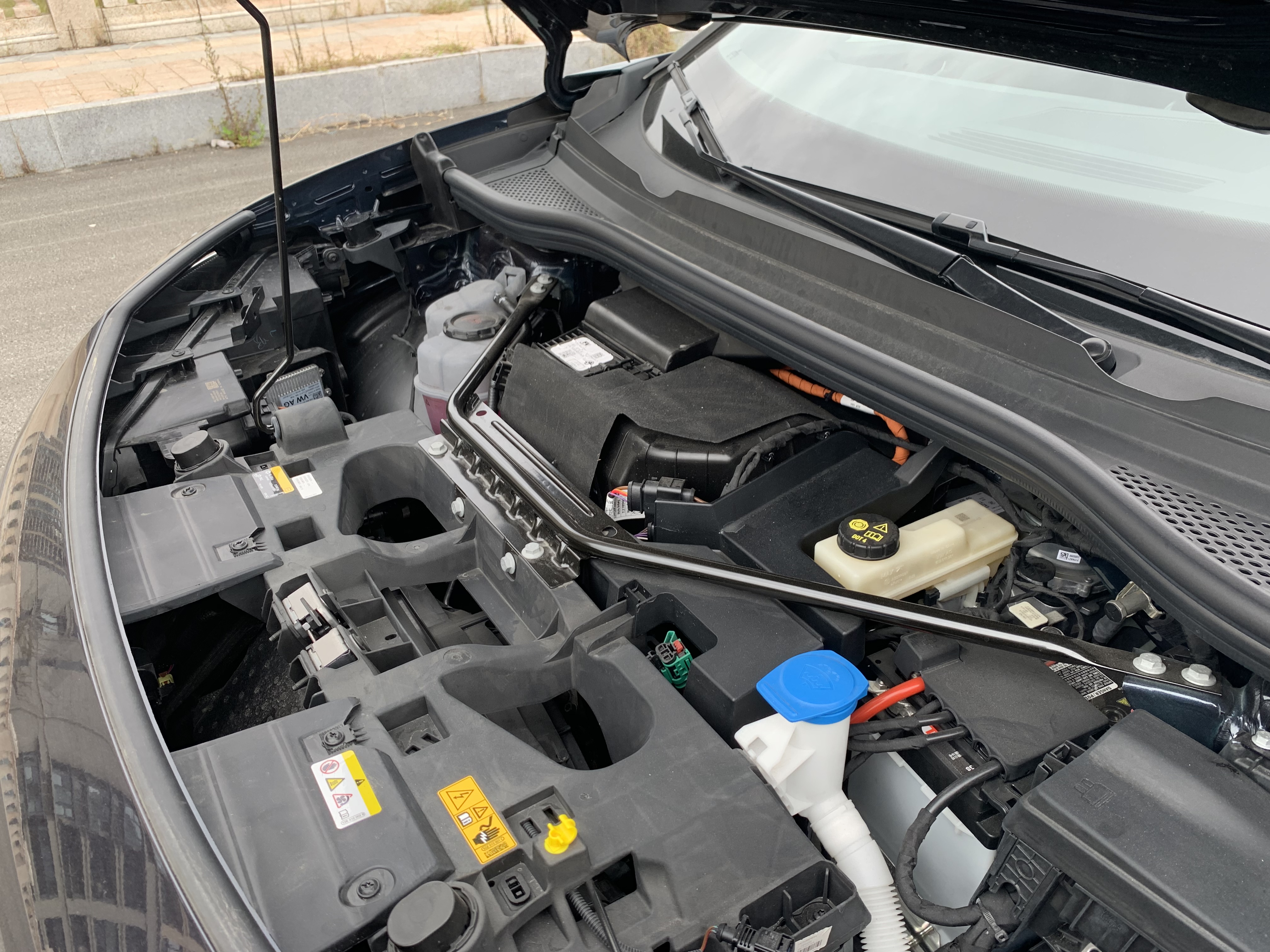
The third is the trunk, which is packed full. Many people think that this is a four-wheel drive model, but actually it is just a rear-wheel drive. The abundance of things can only illustrate its low degree of integration, occupying more space that should belong to the user.
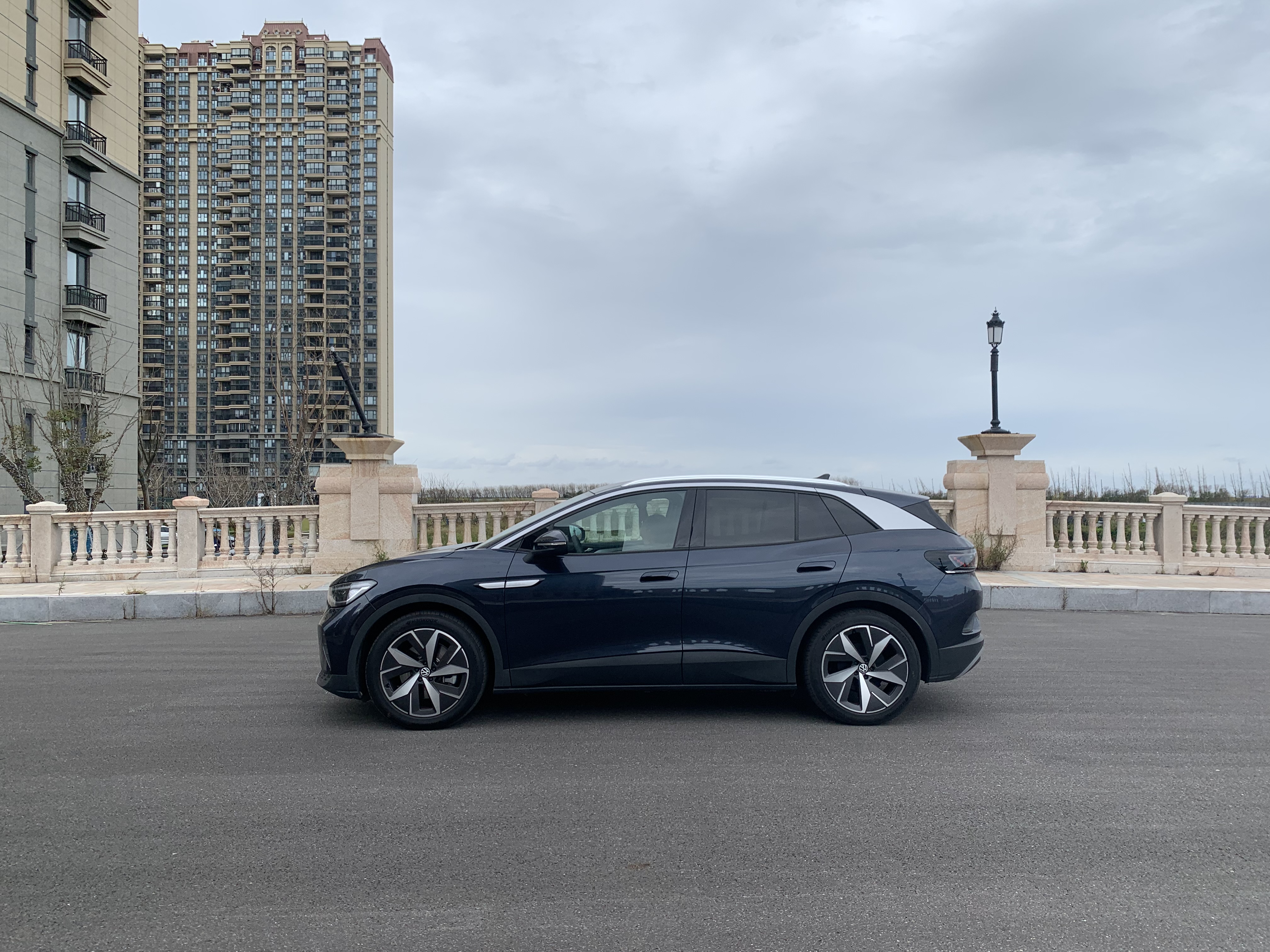
As for the rear drum brakes that everyone has been complaining about, I don’t think this is a drawback. Compared with disc brakes, drum brakes have considerable braking force and have the characteristic of maintenance-free. There is also one point that many media outlets have not explained, which is its Auto Hole. It is the most handy and responsive car that I have ever used, and can almost achieve the highest level of “man-machine integration.”
Summary
Looking around the current electric vehicle brands, they are all aggressively promoting “high precision and cutting-edge technology”. NIO and Ideal, both over 400,000 yuan, as well as XPeng and BYD, both over 300,000 yuan. But the core of consumption is still people like me, who cannot afford too much as working-class people.
For a little over 200,000 yuan, I can buy a pure electric vehicle with strong endurance and excellent handling, as well as a decent brand and quality. I am already very satisfied.
This article is a translation by ChatGPT of a Chinese report from 42HOW. If you have any questions about it, please email bd@42how.com.
